Search Results for: F word
Oh Mickey you’re so fine, you’re so fine you blow my mind, hey Mickey 7!!
Genre: Sci-Fi
Premise: Set in the future on a mining colony, an “expendable” named Mickey 7 – someone built to die over and over again on dangerous missions, their mind re-uploaded to their cloned successor – is erroneously assumed dead, and comes home to find out they’ve already created his replacement, Mickey 8.
About: I always pay attention to what an actor, at his hottest point, chooses for his next project. Because when you’re at your hottest point, you’re being offered the best roles in Hollywood. So whatever you choose in that moment tells us writers something about what actors are looking for. At Robert Pattinson’s peak of stardom – as he played the Batman, which was in theaters at the time – he announced that this would be his next project. Parasite’s Bong Joon Ho is directing.
Writer: Edward Ashton
Details: 280 pages
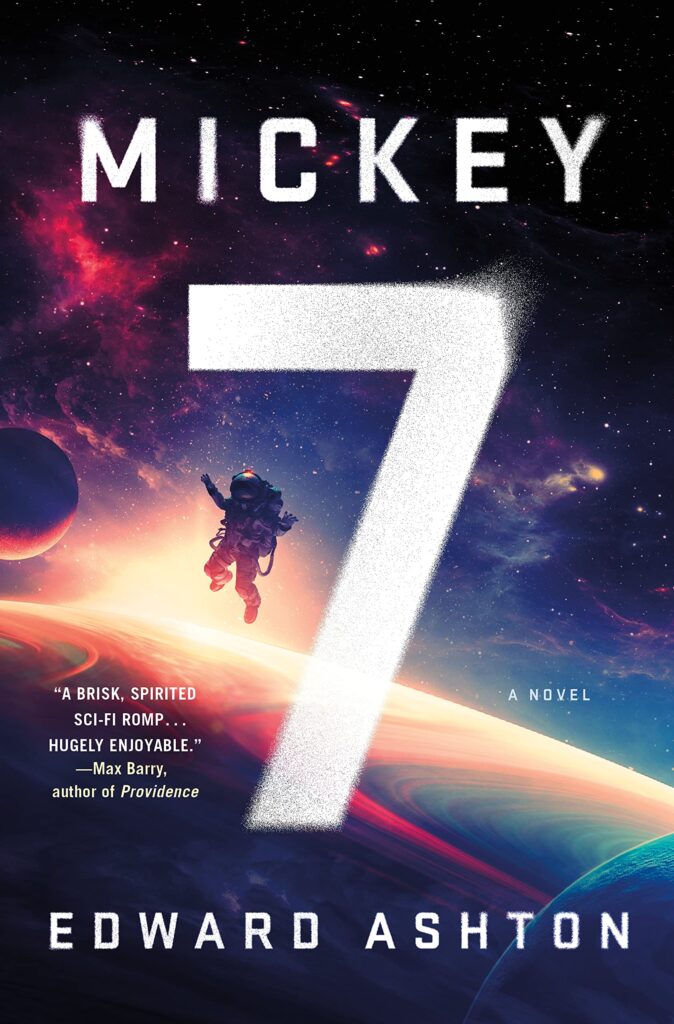
One of the paradoxes present in my life is that I love sci-fi yet dislike so many sci-fi movies I’ve seen lately.
Moonfall, Tenet, The Tomorrow War, Dune, Reminiscence, The Adam Project, Interstellar, Infinite, Life, Blade Runner 2049.
Where the good stuff at?
What I like in a sci-fi script is rich mythology and a good story that moves along at a brisk pace. A good example would be The Martian.
Some of you are probably angry that I’m including “Dune” in movies I don’t like. Dune is the perfect example, for me, of a movie that only gets it half right. It has a rich mythology. But it slogs along at a glacial pace. Then you have something like The Adam Project. That movie moves along at a brisk pace but has some of the weakest mythology this side of Battlefield Earth.
I need both.
Let’s see how today’s novel fares. And whether it will make a stellar movie or not.
Mickey 7 is an “expendable.” He lives in a colony on a planet far away, with about 200 people on it. Mickey has a unique job. He goes out on dangerous missions – usually to suss out whether giant worm-like “creepers” are threatening the base – to die. His deaths give the colony data they can use to stay safer.
As soon as he dies, his backup consciousness is uploaded into a new cloned version of him. So Mickey never truly dies. When we meet Mickey, he’s dropped into a new area and falls through the ice into an underground cavern where a giant worm-like “creeper” sizes him up. Mickey calls base, says he’s about to die, and then waits for the end to come.
But when the worm doesn’t eat him, he finds his way back to the surface and back to base. Except, now, Mickey 8 is in his room. Mickey 7 and Mickey 8 quickly discover that they don’t want to kill each other. So they’re going to try to live together. Which is going to be hard because the base recently instituted a 2000 calorie limit for everyone due to a slow-down in food production. That means each Mickey only gets 1000 calories a day.
In addition to this, our Mickey twins are going to have to fool Mickey’s girlfriend, flight commander Nasha, and Mickey’s best friend, pilot Berto. If they can do that, maybe they can make this “two Mickeys are better than one Mickey” plan work. But when the super angry base commander gets word that something is up, the Mickeys will need to accelerate a plan for figuring out the true purpose of Mickey.
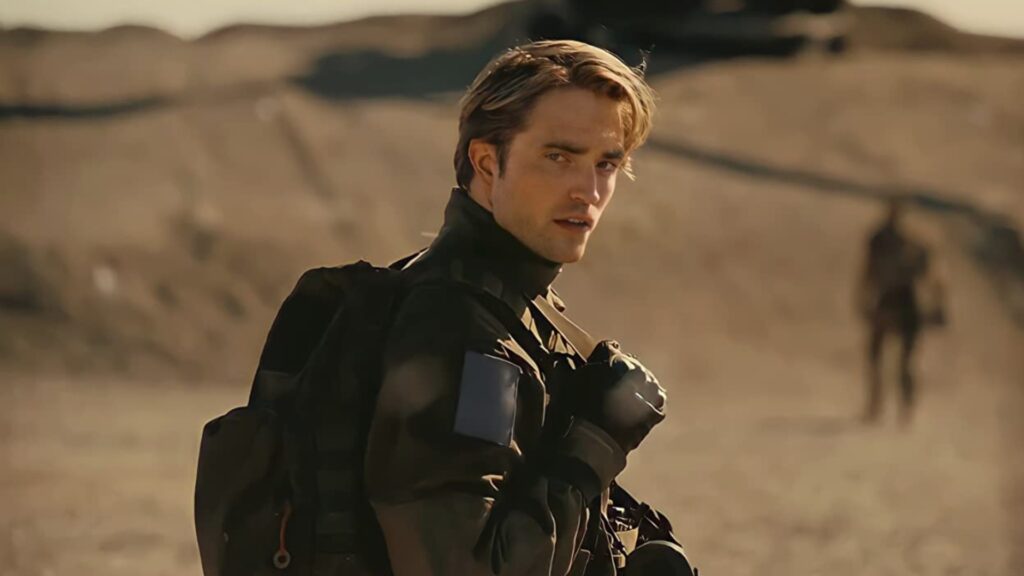
Back in the day, there was this trick literary agents used to use in order to sell scripts. They would send a script off to several buyers at once, let each buyer know that other buyers were reading, which would result in studios quickly reading through the first act to see if they had a movie here, then bidding before they reached the second act, just to beat the competition to the punch.
This is what allowed so many bad scripts to get purchased. When you write a high concept script, the first act is the easiest part. You just introduce your cool concept and you don’t have to prove that it can result in a good movie because the studio doesn’t even get to the second act.
This trend of novels becoming the new spec scripts has a similar con in play. Nobody has time to read anything. Nor does anybody in Hollywood like to read. Agents know this. So they send these books out knowing that nobody is going to read more than 30 pages because doing so would take up 8 hours of their day.
So buyers read the first 30 pages, and if they like the setup, they buy the property. Which has to be how this book got through the system. Because if anybody read the last 200 pages of this, they would not have purchased it. It’s not that it’s bad. But it fails at its primary goal – which is to exploit its concept.
This movie is built around the idea that a guy comes back to find that they’ve already created a new copy of him. Two living copies is illegal. They’re not allowed to exist. That’s our setup. So how does our author explore this dilemma?
One of the copies ends up taking a lot of naps.
No. I’m serious.
This is how the author explores the idea. By ignoring it. He keeps Mickey 8 back in the room so that Mickey 7 can go walk around the base.
The only way this premise works is if we’re scared for Mickey 7. That being discovered would mean instant termination. Yet we’re never once scared for Mickey 7. There are veiled insinuations that bad things might happen if they’re caught. But they’re all so vague, we’re not even kind of worried for Mickey.
What’s frustrating about Mickey 7 is that there are some intriguing ideas being explored in the book. This ongoing question of, is Mickey 8 still Mickey 7, and is Mickey 7 still Mickey 6, going all the way back to Mickey 1? That’s a cool question to think about.
It’s the same concept Christopher Nolan explored in The Prestige, I believe. If you’re immediately uploaded to a new body when you die, did the last version of you die or did you really get transferred?
I liked how this script played with that idea when Mickey 7 discovers Mickey 8. Before this, Mickey 7 was okay with dying because he’d still be alive once his new clone was created. But his new clone – Mickey 8 – has already been birthed. So this person in front of him was already developing his own life and, therefore, wouldn’t be Mickey 7, if Mickey 7 were to voluntarily die.
The book also explores some really interesting backstory stuff about other colonies that went haywire. For example, there was another colony where everybody died except for the expendable and, to make up for it, the expendable kept recreating himself until there were 200 expendables in the colony and no real people. There were several backstories like that that got your noggin thinking.
However, these previous stories were bittersweet to read as they were all a lot more interesting than what was happening in our story, which amounted to, “I’m going to nap for a while, then I want to come out and get some food.”
This was a writing lesson I learned way too late in life. If your characters are talking about things that happened to them (or situations that mirror their lives), and those things are more interesting than the story you’re actually telling? You should probably consider ditching your current draft and writing one of *those* stories. I would’ve loved to have read the version of this where the expendable keeps replicating himself until he takes over the entire base.
If I were this writer, I would’ve sat down and asked myself, how can I exploit this idea as much as possible? For example, there was a brief moment, towards the middle of the book, where I thought Ashton had done something brilliant. I thought that he was actually slipping in and out of Mickey 7 and Mickey 8’s POV and telling the story through their points-of-view without telling us that he’d switched. And we were going to be tasked with trying to figure who was who. Cause they both think they’re Mickey, right? So it would stand to make sense that when telling this story, they both sound the same. And it’s up to us to decipher what’s going on.
Instead, we get this very straight-forward execution that amounts to Nap-Gate and a Tremors ripoff.
Why, then, did Robert Pattinson sign on to this project? That answer is in the What I Learned section below!
[ ] What the hell did I just read?
[x] wasn’t for me
[ ] worth the read
[ ] impressive
[ ] genius
What I learned: With this novel being only okay, it leaves me to conclude that there was only one reason why Pattison signed onto it. He signed on for the same reason so many actors before him have taken these types of roles – because he gets to play two different people. It seems almost too easy of a strategy as a screenwriter. But if you want to grab that big-name actor, write a dual role screenplay. It’s one of the most effective strategies in the book.
Why do Ryan Coogler and James Cameron get to write mega-scripts while you’re obnoxiously constrained by the script-length Gods?
![]()
We are about to be hit with two of the longest studio releases of the decade. We’ve got Black Panther 2, clocking in at over 2 hours and 45 minutes. And we’ve got Avatar 2, which is somewhere north of 3 hours.
This got me thinking about the age old question of script length. When I first got into screenwriting, I was told (and promptly ignored) that your script should never extend beyond 120 pages. As time went on, that number dropped to 110 pages.
Despite this unofficial or official (depending on who you talk to) page rubicon, the newbie screenwriter receives mixed messages every time they go to the theater. They’re told their scripts have to be 110 pages as they watch Avengers Endgame arrogantly clock in at 150 pages. How does a young and confused newbie screenwriter reconcile this?
Over time, I’ve learned that the script length question is a nuanced one. There are certain genres that have low page counts and other genres that have high page counts. There are also additional variables that affect page length, all of which make up a complicated picture, one that seems to change depending on which angle you view it from.
But the basic equation works like this…
Character Count + Location Count + Plot Complexity = Page Count
Less characters = less characters to develop = less pages
Less locations = less situations to set up = less pages
Simple plots = less explaining = less pages
The horror movie I reviewed at the beginning of the month, Deadstream, about a single character live-streaming inside a haunted house… that movie was 90 minutes long. And, for those who don’t know, one page of screenplay equals one minute of screen time (this is why screenplays are written in that weird spaced out manner – to match out page time to screen time). So 90 pages is usually where you’re going to be when writing a 1-3 character movie in 1-3 locations.
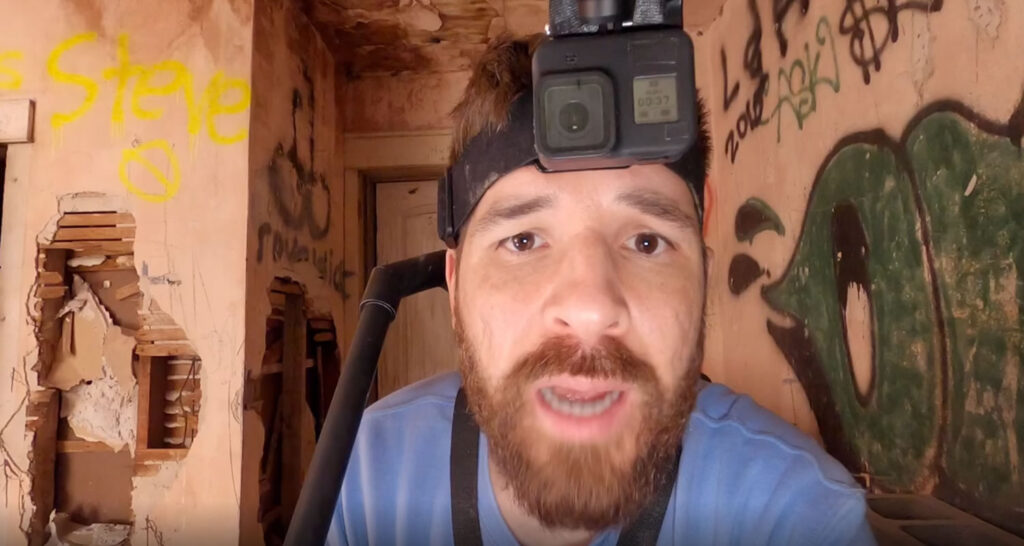
If you prefer to write non-contained thrillers, you’re going to need more page space. The word “thrill” implies a fast pace which means you’re still keeping the page count low. But these movies have a few more locations and characters, which should put them closer to 100 pages.
“Taken” is a good example of this. Tiny character count (only two main characters – the father and the daughter). Our hero is constantly on the move. Final page count for the script: 101 pages.
If you move over to comedies, these tend to work best in the 105-110 page range. Like thrillers, they need to move fast. And since most comedy plots are bare bones, you don’t need to spend a lot of time plotting. Even the slightly complicated storyline of The Hangover didn’t affect the page count that much, as the screenplay came in at 111 pages.
When you move up to action or action thrillers (Bond, Fast and Furious, Mission Impossible), now you’re tempting the page count Gods, moving closer to that most evil of script overseers: PAGE 120. This is because you’re visiting more locations, which requires more setup, as well as more explanation. And managing any plot big enough that we’re jumping to entirely different cities requires more time on the page. So these scripts will hover around that 120 page zone.
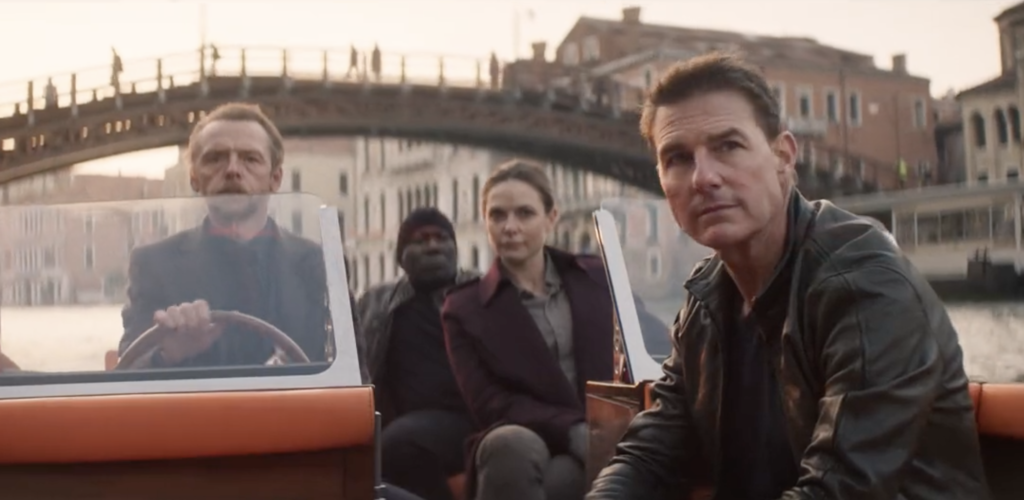
When you add sci-fi or fantasy into that mix, you really start struggling to keep the page count under 120. That’s because in addition to everything else you’re doing, you’re also adding mythology to the recipe. You need scenes that show how your world works (The Matrix spent 25 pages setting up the rules of its world). You also need more description than your average script because you have to explain all this stuff you’ve invented in your imagination. This can really bulk scripts up.
In general, however, the two things that have the biggest influence on your page count are your character count and your plot complexity.
It takes time to adequately set up a character. You need to show who they are in their everyday life. You need to show us what their job entails. You need to establish their relationships with other people. You need to introduce their flaw. That takes time.
If you then have two major characters – or three, or four – you can see how that could start chewing up page space. Cause you have to do the exact same thing for all those characters. This is why movies like Black Panther 2 and Avatar 2 are so long. They’re not only covering Black Panther and Jake. They’re covering the lives of the many many people around them. Like that Ironheart girl (the Iron Man offshoot). She’s going to need 10 pages of setup easy. That’s a lot of pages!
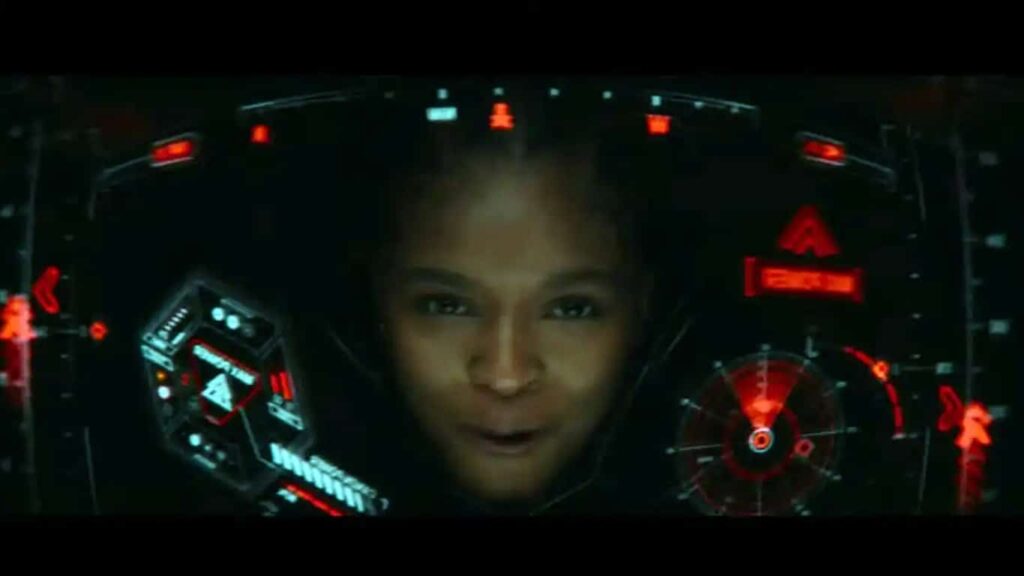
Also, to be clear, when I talk about character count, I’m talking about legit characters who have major roles. I’m not talking about the waitress or some loser who comes in for one scene to provide exposition. I’m talking about characters who have at least five scenes in your movie. The more of those characters you have in your script, the more pages you better prepare for.
The other thing that adds a lot of pages is plot. But it’s not just the plotting itself that brings your page count up. The more complex the plot, the more extensive the exposition. It requires more scenes with characters explaining things to other characters: what’s going on, what they’re after, where it is, how they’re going to get it. And that information is constantly changing, which requires another set of extensive exposition scenes. Watch an Avengers movie and track how often characters talk about what they need to do and how they’re gong to do it. It’s a lot!
Complexity of plot = more exposition, and more exposition is a page-eater. Your Fast and Furious crew discussing how they’re going to break into the White House could take up 5 pages easily.
Bringing this back to Black Panther 2 and Avatar 2: Both these movies have extremely extensive plots and tons of characters. I’m amazed that they’re able to keep the scripts under 300 pages with how much territory they cover.
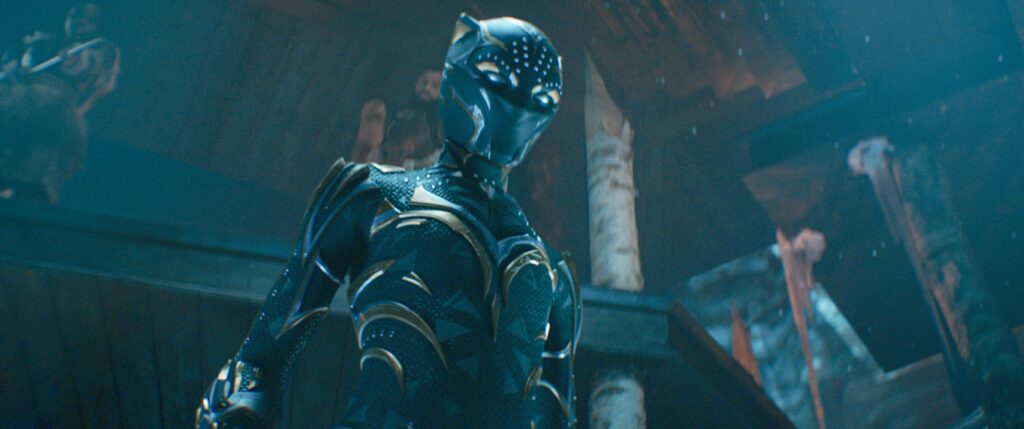
The question then is, why aren’t we allowed to do that in our scripts? This question requires a multi-faceted answer that I don’t have the time to get into. But the bullet points are, you’re writing a script to win a reader over. Ryan Coogler is making a movie to win over an audience. Two completely different scenarios. Look no further than the exit point options for each. Once Ryan Coogler has you at his movie, you’re stuck there. A reader, however, can stop reading your script the second they get bored. And if they’re wavering on page ten and see that they still have 120 pages to go, believe me, they’re going to give up on your script.
But the more nuanced answer is that you *are* allowed to write long scripts. You just need to know all the dramatic tricks in the book to suspend time. One of the reasons Titanic could be 3 hours and 14 minutes is because James Cameron is a master at suspending time. His entire story is built around dramatic irony (we know the iceberg is coming and the characters do not) which creates a strong line of both anticipation and suspense, each of which help us forget time. And that’s just one of the many tricks he uses.
If you know how to do that, then, theoretically, you can write a 300 page screenplay. I’m being serious. If you know how to make time go away in the reader’s head, they won’t check the page length. Cause they won’t want your story to end.
Unfortunately, this is a really hard thing to do. The best authors on the planet struggle to do it every time they sit down and write a book. So it’s going to be extra hard for anyone without a lot of writing experience.
And that’s where the real problems with page count lie. The people who usually write the longest screenplays are the newbies who know the least about screenwriting. They are in that wonderfully ignorant stage where they believe everything they write is gold. But it isn’t gold. It’s trash. Which means that readers are conditioned to think that any long script from another amateur will also be trash. Which is unfair, I guess. But, guess what? Life is unfair.
To summarize, your script’s length will be determined by the genre, concept, and content. More characters equals more pages. More intricate plots equals more pages. So watch out for both. The more you have to explain and describe (think sci-fi and fantasy), the more pages you’re gong to add. Use this information to make informed decisions about which scripts to write.
I’m not saying don’t write a long script. Some stories require more time. But you do want to be realistic and understand that the industry isn’t accepting of longer screenplays from unproven talent. So, if you’re going to write one, make sure you have a plan for distilling and eliminating time to such an extent that the reader never thinks about the page length while reading. They’re too busy enjoying your story.
Good luck!
P.S. – Newsletter coming to your Inboxes tomorrow night with an AWESOME(!!!) script that seems to have been forgotten by time. Oh, and don’t forget to e-mail me if you want a script or logline consultation. $100 off if you mention this article!!! (carsonreeves1@gmail.com)
Genre: Action-Comedy (Family?)
Premise: Two former thieves are having a hard enough time with their fussy newborn baby when a mishap draws them back into their old lives, forcing them to recover a priceless jade bangle, escape their boss’s murderous son and, toughest of all, get their baby to sleep through the night.
About: This script finished with 7 votes on last year’s Black List. The writers, Ted Kaplan and Jenni Hendriks, have written a couple of small novels. This is their first success story in the screenwriting world.
Writers: Ted Kaplan and Jenni Hendriks
Details: 109 pages
 Real-life married couple Ryan Reynolds and Blake Lively for the leads?
Real-life married couple Ryan Reynolds and Blake Lively for the leads?
Comedy and Action.
If you can master the combination of these two genres, a huge world opens up to you. Cause this is where all the money is made. This is the powerball winning ticket. Not that thieving nickel slot machine.
Look at all the movies that make the most money. Marvel. Star Wars. Fast and Furious. Even Bond. What do they contain? They contain copious amounts of action, and humor!
In other words, these are great writing sample specs to get into the Marvel, the Lucasfilm, and Universal offices so you can pitch your takes on writing one of those movies.
My concern with today’s spec, however, is that it might be too family-oriented, and therefore get pigeonholed in the “lightweight” category. The lightweight action-comedy writers DO NOT get pulled in by Marvel and Lucasfilm. So let’s see which side of the thin cool line Sleep Factor finds itself on.
Mia and Ryan are the ultimate thieving couple. Because they’re in a relationship, they can read each other minds, as Mia utilizes her tech skills to fly drones around the museums they’re casing, pulling security guards along with them, while Ryan slips in and steals whatever they need to steal.
But those days are about to come to an end because Mia is pregnant. Congratulations, Mia. Cut to a year and a half later and these two are lame-o suburbanites who work at both Home Depot and some boring office job.
The two are not dealt a nice baby hand, as their daughter, Penny, can’t strop crying. The sleepless nights are taking years off the couples’ life. The only solution they’ve found to get their daughter to sleep is to drive her around in their car.
One day, when Ryan is coming home from the grocery store, he sees a car robbery taking place and immediately recognizes his wife as the leader of the team. Ryan chases her down then yells at her. She apologizes and says she’s lost her lust for life. That’s the only reason she started doing these late night robberies. And, after some discussion, Ryan admits he does the same thing.
While this conversation is happening, Mia’s very “hip” crew (“JIN-WOO, Korean-American, intense, probably wearing a social justice tee, LOLA, Black, the brains of the operation, and BEX, non-binary, all attitude”) steals the rare extremely valuable bangle bracelet that Ryan stole from his last job, and drive off.
That bracelet belongs to Ryan and Mia’s longtime handler, Joe, who tells them he’s going to kill them if they don’t bring it to him by morning. So off Ryan and Mia go, their baby in tow, to retrieve the bangle. But when the young hip crew make a side-deal with Joe’s biggest rival – the Estonians! – the stakes go up considerably. Do Ryan and Mia still have what it takes? And can they perform this mission with a baby in tow?? We’re going to find out!
Since this script has a lot of car-chasing in it, let’s talk about lanes.
You, the screenwriter, need to know what lane your script is in. You then need to play by the rules of that lane. So, if you’re in the slasher lane, you probably aren’t going to have any car chases. If you’re in the buddy-cop comedy lane, you’re probably not going to have any steamy sex scenes.
Your lane determines the rules you abide by.
I’m not sure Sleep Solution knows what lane it’s in. At first I thought this was a family action movie in the vein of Adventures in Babysitting. But there’s quite a lot of swearing here. And you can’t swear so much in a family movie. So that told me they’re trying to pull in the regular action demographic.
Except which action fans are going to to pay to see a movie about a couple stealing things while trying to keep their baby asleep? It’s not cool enough. I’m sorry but you can dress it up any which way you want. Parents aren’t cool. nd babies aren’t cool.
That leaves the script with a very narrow audience, as far as I can tell. You’re basically aiming for the “young parents” demo. And I don’t know if those people have time to watch any movies, much less this one.
In addition to this, the movie missed out on its best idea. They establish early on that the baby can’t sleep unless it’s in a car driving at least 45 miles per hour. I loved the motivation for this. The baby was in Mia’s tummy during all her wild car chase burglaries. So it makes sense that it feels the need for speed. But that storyline is abandoned early on. There are plenty of times when our couple stops and discusses things. At one point they even pawn the baby off on a babysitter.
Isn’t the best version of this movie a modern-day family-friendly take on Speed? They can’t let the car stop or else the baby wakes up? Admittedly, that would be a very challenging script to write. But I say go with the best hook you’ve got. There’s no true hook here if the baby can be given over to other characters at certain points in the story.
The script also suffers from a vanilla execution.
I’ve struggled with whether the family-friendly comedy can have anything other than vanilla execution. You can’t get too wild in the PG space. But then I always think of Pixar movies. Those films manage to bring in parents, kids, as well as the 18-35 demo. They achieve this because their films are highly imaginative and put a premium on character development.
There’s very little imagination in Sleep Solution.
In fact, there was only one scene that I felt was worthy of a good spec screenplay. Mia and Ryan capture one of the woke crew members and demand to know where the other crew members are exchanging the stolen bangle bracelet..
The scene happens in the back of their car and Bex, the crew member, won’t budge. He’s not giving up the information. So Mia proceeds to change Penny’s diaper in front of him as a torture device. To a 21 year old kid, this is pure hell. He fights it and fights it as Penny goes into extreme detail about the diaper-changing process until it just gets too disgusting and Bex cracks.
I absolutely love when writers do this. They write a scene THAT COULD ONLY OCCUR IN THEIR MOVIE. You have to remember, people, that readers read the same average to slightly-above-average scenes all the time. We’ve become immune to them. One of the most effective tools you have against this is mining the unique nature of your concept.
If Mia and Ryan had threatened Bex with a gun or a knife, we could’ve seen that in any movie. This was the far better, and funnier, option. But that was it. We never get another scene like it again.
Due to the vanilla execution and lack of imagination in Sleep Solution, I can’t recommend it. It has that professional sheen to it that differentiates it from the average amateur script. But in order to get your script beyond the bottom layer of “professional,” you have to push yourself in the execution stage.
A writer once told me about the way his mentor would critique his screenplays. Whenever he encountered a scene, moment, or set piece that felt average or slight-above-average, he would write down: NGE. That stood for “Not Good Enough.” In other words: YOU NEED TO TRY HARDER.
Script Link: Sleep Solution
[ ] What the hell did I just read?
[x] wasn’t for me
[ ] worth the read
[ ] impressive
[ ] genius
What I learned: Again, write scenes that can only happen in your movie because they evolve from your specific premise. A classic famous example of this is the birth scene in A Quiet Place. That scene could only be that effective in that specific environment. Sadly, whenever I see writers succeed at this, they only do it once or twice a script, like here. Push yourself more. Try to come up with five of these scenes — six, seven, ten. The more you’re mining your specific premise, the more original your script is going to be!
Plus I offer you the golden rule of writing great horror!

So I checked out Barbarian today and, wow, what an opening act, huh? That has to be one of the best opening acts for a horror film ever.
Moments like this inspire me. You guys hear me complain about shows like Andor and movies like Nope, and it makes me sound like I’m some screenwriting curmudgeon who doesn’t like anything. But the reality is, I just want good writing. That’s it. If you give me good writing, I’m happy. And good writing is rare.
There’s, what, 700 shows on the air year-round? Probably 15 of them contain truly good writing. So, if we do the math, I’m only going to be double-dog dare down for something once a month. In the meantime, I have to be perplexed by shows like The Watcher, which, while it has its moments, occasionally feels like it was written by a 12 year old.
This specific month, being October, means I’m zoned in on horror movies. The horror genre is like any other genre in that it’s hard to execute. Even more so with the genre being so susceptible to cliches.
But it did get me thinking about horror today compared to horror 20 years ago, 30 years ago, 40 years ago. What does modern horror look like? And what can modern horror learn from classic horror? The opening act of Barbarian can tell us a lot.
What do you think of when you think ‘modern horror?’ What’s the movie that pops up in your head? For me, it’s “Get Out.” That movie has had the biggest influence on the genre in the past five years and its success basically boiled down to integrating social commentary into the movie.
This is combined with another (relatively) recent advancement in the horror genre which is putting a premium on character development. If there’s anything that my viewings of Friday the 13th and The Evil Dead taught me, it’s that older horror films put next to zero focus on character development. You didn’t know anybody in those films.
Why has this since changed? Well, there was a time when all horror films got bad reviews. Then Rotten Tomatoes was born. The growth of that site set up a certain expectation in viewers that a “rotten” score meant a movie wasn’t worth seeing. So the studios sat down and asked themselves, how can we get better horror RT scores? The answer was pretty simple – stop with the paper-thin characters. Give us characters we actually care about.
The Sixth Sense was a major participant in this change. That movie was about a boy who had a damaged relationship with his mother and a therapist who had a damaged relationship with his wife who was trying to right a wrong from failing a patient by helping this one. It was very much character-driven.
So that seems to be the trend now. Social commentary with a heavy focus on character development. Is this a good thing? Funny you ask. Because Barbarian answers that question almost as perfectly as you can answer it.
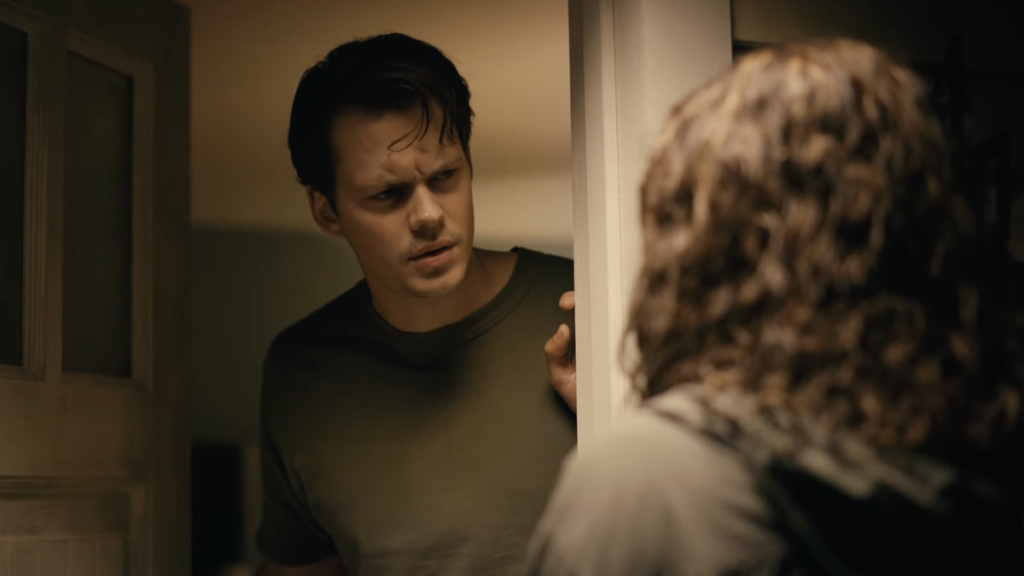
For those who haven’t seen the film, a young woman, Tess, comes to stay at an AirBnB in a poor Detroit suburb while in town for a job interview. But when she gets there, late at night, it turns out a guy, Keith, who says he rented the small home from a separate online rental service, is already there. It’s late. It’s raining. Keith says there’s a convention in town and all the local hotels are full. She might as well stay the night.
What follows is 25 minutes of us wondering if Keith is a bad guy and if he’s set this all up to trap Tess here so he can do God knows what. I suggest you watch the movie yourself before you keep reading this post (it’s free on HBO Max) because I have to get into spoilers. But what happens is, Tess eventually finds a secret room in the basement and both her and a highly suspicious Keith investigate it together. Then something horrid comes out of the shadows and slams Keith’s head against the rock wall repeatedly until his skull cracks.
Before we continue, I’m going to give you the secret to writing great horror.
This is the golden rule that will make you gobs of money if you can perfect it.
All great horror is, is a series of moments where you, the writer, imply something bad is coming, and then milk the suspense until that bad (or, if you want to twist it, un-bad) moment arrives. That is the first act of Barbarian in a nutshell and why it’s so brilliant.
We’re suspicious of Keith right away. Did he really rent this place? Or was he laying in wait? Is he really as good of a guy as he seems? Or is he secretly a monster? You see, once you set that potentially dangerous outcome up, you’ve got the reader on the fishing line. They are all yours.
From there, all you have to do is play with the situation (milk it for everything it’s worth!). So there’s a moment where Keith says, “I’m making tea. Do you want some?” We’ve all seen horror movies before. When a guy is making a drink for a girl, is he really just making her a drink? So you can play with that thread. Is Tess going to drink the tea? As it turns out, she doesn’t drink the tea, which is great, because it means they can suspend the situation even longer.
When you imply a terrible outcome is coming (Tess might be killed), good writers can string that along for five, ten, fifteen, and, in this case, 25 minutes. That’s the secret to writing good horror. You now know what you have to do: set up a potentially bad outcome and milk it. But you still need to practice how to extend the suspense out. Cause if you don’t know what you’re doing, you might invent a lot of silly unbelievable situations that break the magic.
What was so great about Barbarian was that all the suspense was built around real believable situations. Tess wakes up in the middle of the night to find her locked bedroom door open and Keith is on the couch having a nightmare, talking in his sleep. He couldn’t have opened the door. And even if he had, why draw suspicion to himself with the nightmare sleep-talk? So we’re really curious about where this is going.
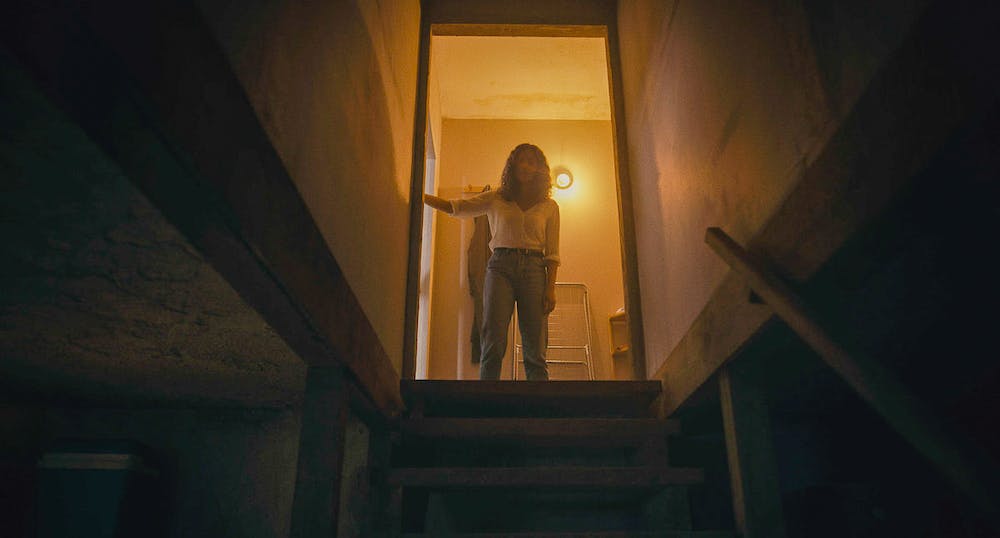
However, once that first act ends, we jump into an entirely different story.
We cut to the Pacific Coast Highway where actor, AJ, gets a phone call from his agents telling him that he’s being accused of rape by his co-star. In other words, we go from a movie that’s entirely about horror and nothing else to straight social-commentary with a fair amount of focus on character development. It becomes the prototypical 2022 modern horror film.
So, the obvious question needs to be asked.
Did it become better or worse when it shifted from classic horror to modern horror?
I argue that once we cross that bridge, the movie loses something.
Now, to be fair, we’re so invested in this spooky house, which AJ finds himself in, that we’re still engaged in the movie. But I couldn’t help but notice that before AJ hit the screen, I’d forgotten I was watching a movie. I really did. And when he and his storyline entered the movie, I became very aware that I was watching a movie. I also became aware that Hollywood was preaching to me.
So what does this mean? Does this mean don’t write modern social commentary character-driven horror? Of course not. Modern horror is what’s selling! So I’m not going to tell you to avoid it. But I do think the audience has caught up to Hollywood. Because of this, they’re more likely to be pulled out of the movie when you preach to them. Whereas, if all you care about is scaring people, and you do what I told you to do above (imply danger is coming and milk it for everything it’s worth), you’re much more likely to write a horror film that everybody loves.
I haven’t seen Smile yet so maybe someone can tell me if there’s a social commentary angle or not. But certainly from the way they’re promoting it, it seems like it’s a movie that just wants to scare you. And how’s that working out for Smile? Oh yeah, it’s just the biggest horror success story in the past four years. That’s the audience telling you something.
But look, if you have a story to tell that you feel passionate about and the themes in it cover any issue (social or otherwise), you can still write a great horror script. It just has to be genuine and not pandering. If you want to know what “pandering” means, look at “They/Them.” That movie was so desperate to push a message that everyone hated it, even the core group it was targeted to. There are no teams when it comes to being annoyingly pandered to.
So don’t write a movie just to appease what Hollywood wants, whether it’s yesterday’s trend, today’s trend, or tomorrow’s. Write a movie that you would write regardless of if the trend existed. Cause when you’re passionate about an idea, that’s worth something on the page. Promising Young Woman was social commentary but you could tell that it wasn’t pandering. Emerald needed to tell that story no matter what.
It’s so funny that a single movie would come out that shows you, via a direct comparison, how true horror and modern horror compare. Who won? You decide.
And guess what? I have a treat for you guys. You can read the Barbarian script below if you don’t have HBO Max. Make sure to tell me what you think in the comments.
Script link: Barbarian
Do you want a script consultation with Scriptshadow? E-mail me if you’re looking to get feedback on your script. You can check out the consult page here but I also offer pretty much any feedback you need, from a logline to a script synopsis to your first act to your whole script! E-mail me at carsonreeves1@gmail.com and let me help you make your script great!
If there is such a pitch as “Michael Clayton meets Ready Player One,” this is it
Genre: Sci-fi
Premise: Set in the near future, a group of savvy game-developers create high-class characters that they auction on the open market for a popular online game.
About: Today we’ve got a mysterious script from Andor showrunner, Tony Gilroy! You can download the script yourself at the bottom of the review.
Writer: Tony Gilroy
Details: 125 pages
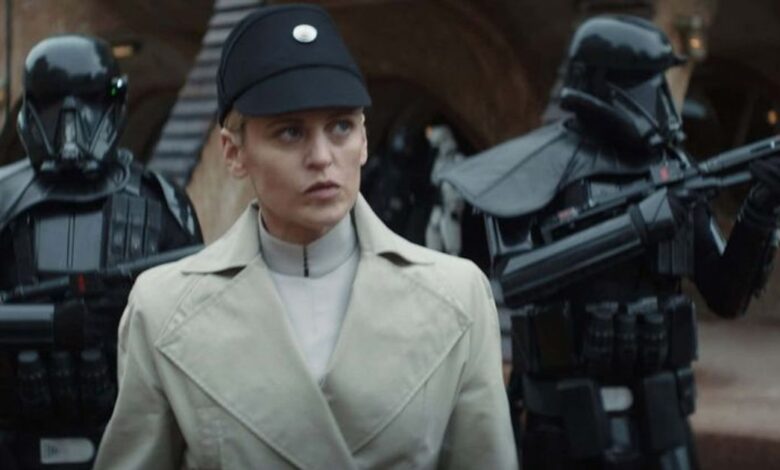
There are so many things to get triggered about in 2022.
So why is it that my number 1 trigger is Tony Gilroy??
Oh, that’s right. Because of Andor!
I watch Andor through this haze of perplexity and frustration because I know it *says* it’s a Star Wars show. But there’s nothing in it that resembles “Star Wars!”
No, I take that back. Last week there was one scene on a beach that actually felt like Star Wars. There were aliens. ALIENS! I know it sounds weird that I’m getting excited about aliens but you have to understand Gilroy’s Star Wars universe only has four aliens and three robots in it. The man hates Star Wars.
But anyway, seeing aliens and robots was this really cool look at what this show could be if it was actually run by someone who had seen a Star Wars movie before he signed up to direct a Star Wars series. Honest to God, I still don’t believe Tony Gilroy knows what a lightsaber is. And Kathleen Kennedy still hired him!
And while we’re here, we need to stop the positive discussion of Andor on the internet.
Stop.
Everyone knows this show is as exciting as watching a womp rat nap. But the internet is so weird when it comes to these shows. I don’t know exactly what’s going on or why people feel the need to prop up a show that everyone knows is lame. But they do. They say this show is groundbreaking because it deviates from the Star Wars we know which is “necessary” for the franchise to grow.
Oh go jump off a Cloud City diving board. You know what will help make Star Wars grow? A good Star Wars show!!!
But anyway, I’ve become so obsessed with why this show got produced, to an, admittedly, unhealthy degree, that I looked back on Tony Gilroy’s body of work to see if it’s not just that he doesn’t understand Star Wars. But maybe he’s not a very good writer.
He wrote that cheesy ice skating romance flick called The Cutting Edge. That’s what started his career. He had that lame Stephen King adaptation, Delores Claibourne. He then wrote The Devil’s Advocate, which I liked quite a bit. It was The Firm meets hell. Which I thought was a fun pitch. That was his first true hit.
From there he wrote Armageddon. I don’t even know what to say about that one because 13,000 writers worked on that script. And I still don’t know if an Armageddon writing credit is a positive or negative thing. I suppose as long as he’s not responsible for the animal cracker scene, his work on the film is a net positive.
From there, he moved into the Bourne franchise and that’s where he really became an A-lister. I liked The Bourne Identity. The rest of the films were slightly better than average. But he certainly gets kudos for that first film.
Cinephiles love him for Michael Clayton. Maybe at some point I’ll revisit that movie but I didn’t like it when I saw it. Can someone pitch the reason why it’s worth watching?
This brings us to Open World, a more recent screenplay of Gilroy’s. Let’s see if this is more Bourne Identify or more Andor.
A quick warning – this was one of the hardest scripts to follow that I’ve ever read. So this summary is going to sound vague. It’s set a dozen years in the future (that’s the one part I’m sure of). Two game developers, Evan and Laurel, work for a mysterious company that builds characters for rich gamers that can be played in a large open-world game.
Their boss, Monty, recently learned that one of their co-workers, Tina, sold company secrets to a rival. So Monty wants Evan and Laurel to keep an eye out, in the game, for any suspicious goings-on. He occasionally sends them to Old West towns that he believes may be housing Tina’s latest character.
In one of these excursions, they see a blue rag of some sort but are unable to get it for some reason. There is a lot of consternation about this blue rag and what it means. There are very important conversations that follow that discuss it in detail. Nobody thinks to tell us, the reader, why we should care about the blue rag. But it’s certainly a priority for the characters.
After this event, Evan and Laurel’s co-worker, Gita, tells their boss, Monty, “The Koreans are in the lobby.” At this point, I mentally gave up trying to understand what this abomination of a script was about. But I guess the big reveal is that some of these characters in the game are becoming artificially intelligent and may be used for military purposes. The end.
So, what went wrong here?
We’re dropped into things in media res – which means we’re thrown into a story that’s already going on. And because Gilroy either isn’t clear or is purposefully being mysterious, we’re playing catch-up from the get go. We know people work on open world video games but we don’t know much more than that.
I didn’t know until page 27, for example, that the company’s primary job was to create characters for rich people then sell them in online auctions. It was very oddly presented. Usually, in a movie, we meet a main character, we learn who he is, something interrupts his life, then he has to go deal with it. The ‘dealing with it’ part is the second and third act.
“Open World,” on the other hand, has us meeting a bunch of random people, seeing them play a video game, watching them mope around in their real life, then go back into the game without explaining to the reader why, then come out of the game and speak in hushed tones about vague things that they saw, then go into work, then get yelled at by their boss, then go back into the game, and then do stuff in the game that we never quite understand. It’s not exactly riveting storytelling.
If you don’t lay out who your hero is and what they have to do within a reasonable amount of time, it’s virtually impossible to make your script work. Cause we’re going to be asking basic questions (such as “who’s the main character”) deep into a script at a time when what we should be doing is enjoying ourselves.
It’s an interesting approach – making the reader play catch-up. I’m not exactly against it if it’s done well. But it’s definitely a gamble. Because if you, the writer, stay too far ahead for too long, the reader just gets frustrated and stops caring. Especially if the mysteries you’re presenting aren’t very engaging.
Ooh, the’s a blue cloth in the game. What’s that blue cloth?? Everyone in the movie wants to know. OH YEAH, BUT WHY THE HECK SHOULD WE THE READER CARE? Does the writer ever consider that question? I don’t think so.
Another huge problem with Gilroy that hurts him here and hurts him in Andor – is that his stories lack playfulness. He sees the world through such a serious lens, that the world of fun doesn’t exist in his eyes.
This script is about gaming. What is out there that speaks to “fun” more than gaming? Yet Gilroy manages to avoid that word at all costs.
You guys remember that brilliant scene in The Bourne Identity where Jason plans this big heist where he’s going to send Marie into a government building to steal important information about who he is so he can find out who’s after him? And she goes in there and he’s going over, in detail, every little move she needs to make to swindle the officials, and a minute later she comes out with the documents and he stares at her in awe before asking her, “What did you do??” And she says, “I just asked.”
THAT’S WHAT I MEAN BY PLAYFUL.
And I’m willing to bet a million dollars that another writer wrote that scene. Not Gilroy. Because Gilroy hates fun. There’s a brief moment in the most recent episode of Andor where the famous MSE-6 mouse droid appears for a second. And you can feel Gilroy’s unbridled anger at having to include the shot in the scene. Just from the way he points the camera and quickly cuts away.
I’m not going to lie. There’s a part of me that thinks I got duped here and that this script isn’t actually Gilroy’s. Cause I can’t imagine even him writing something this poor. Maybe you guys can do some research and confirm or deny it. If it is his script, I mean…. wow. This was really bad. Or maybe it wasn’t. You can decide. Cause I’m including the script below.
Script link: Open World
[x] What the hell did I just read?
[ ] wasn’t for me
[ ] worth the read
[ ] impressive
[ ] genius
What I learned: If you have a lot of characters and your story is complex, you need a “Reminder Character.” This is a character who shows up and basically reminds the characters, and by association us, what needs to be done. Yes, this can feel like blatant exposition. But blatant exposition is preferable to complete and utter confusion, which is how I felt reading this. I had next to no idea what was going on. You needed someone to come in and say, “Don’t forget, we’re going after the MacGuffin and we need it within 24 hours because, if we fail, the entire world blows up.” Lay out the freaking story why don’t you.
